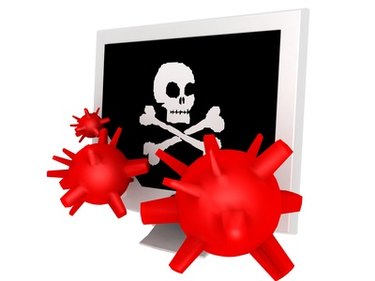
Many Windows users who encounter system problems come to the conclusion that a process called rundll32 is to blame, as it can show up multiple times in the Windows Task Manager and consume so many system resources that the computer slows to a crawl. Rundll32 is not the culprit, however, and should never be uninstalled or disabled—it is a critical Windows system process. Disabling rundll32 will cause your system to become unstable or, worse, prevent Windows from starting up at all. Instead, you can pinpoint which processes are hijacking or masquerading as rundll32 and disable or uninstall those processes.
Step 1
Run anti-virus and anti-spyware programs on your computer. Follow your software manufacturer's instructions for performing a full system scan. For best results, perform these scans in Windows Safe Mode (Resource 1). Reboot the computer when complete.
Video of the Day
Step 2
Look for errors or instability in your system. If your computer runs more smoothly after the virus/spyware scans, you likely eradicated the processes that were hijacking rundll32.exe.
Step 3
Check for the legitimate rundll32.exe file. If you continue to have problems, you must pinpoint which programs are masquerading as rundll32. The real rundll32.exe file is located in C:\Windows\System32\rundll32.exe. Locate this file by performing a search. Click the "Start" button, then "Search." Type "rundll32" in the search box. In Windows Vista and 7, type "rundll32" in the run/search box in the "Start" menu.
Step 4
Copy—but don't move—the legitimate rundll32.exe file from the System32 folder to your desktop. Rename it rundll32COPY.exe.
Step 5
Delete all other rundll32.exe files that were returned in your search. Do not delete the version located in C:\Windows\System32. Empty your Recycle Bin after you have deleted the files.
Step 6
Reboot your computer. In most cases, you should have deleted all malicious versions of rundll32.exe. If you left the legitimate file intact, Windows should function normally. If you deleted it by mistake, copy the backup version from your desktop back into the System32 folder and rename it rundll32.exe.
Video of the Day